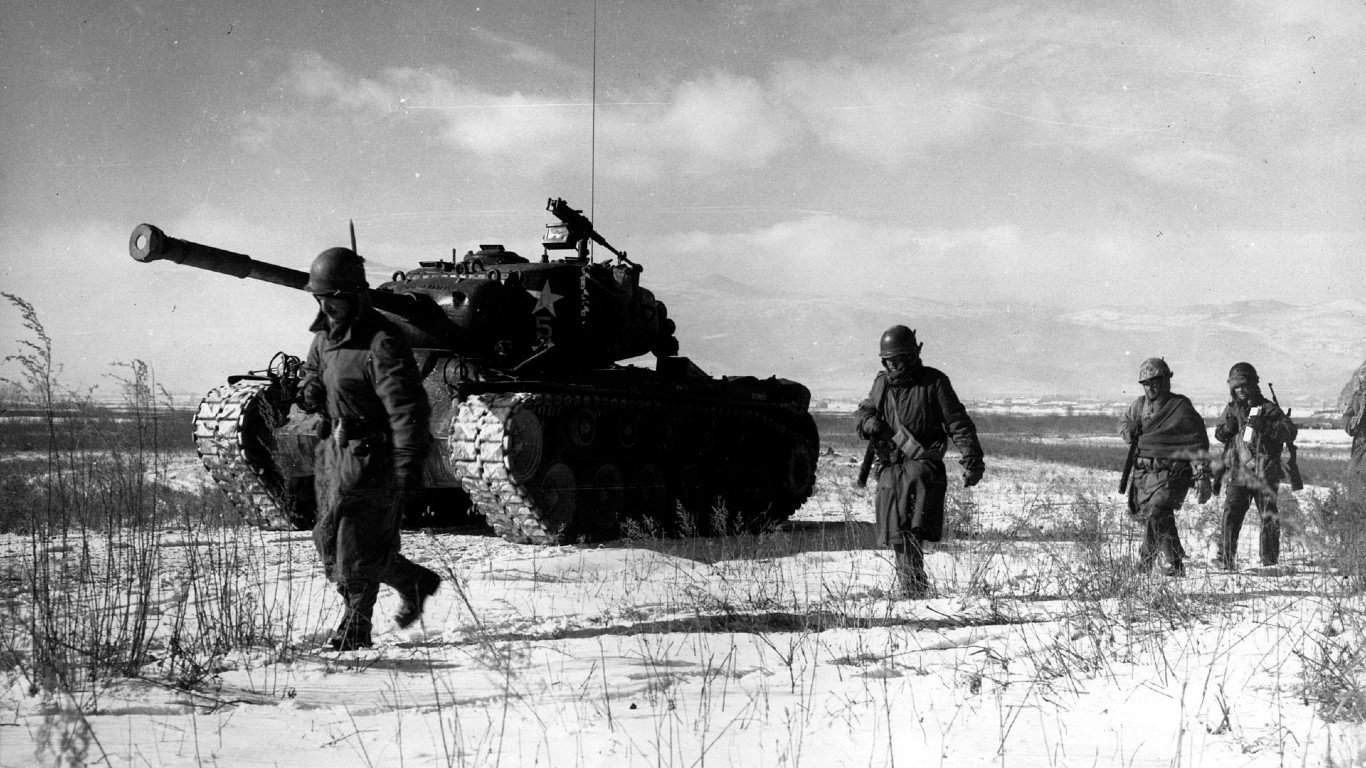A harsh reality that the American military has to deal with is the fact that it has not had a decisive victory in a major war since World War II. The Korean War is often regarded as a stalemate, while Vietnam ended in defeat. Assessing U.S. engagements in Afghanistan and Iraq yields ambiguous results, with no clear-cut victories.
In victorious conflicts, military setbacks still occur. One of the most notable examples is the attack on Pearl Harbor. On the other hand, in lost wars, disasters tend to happen one after another. For an example, during the Vietnam War, the Tet Offensive in early 1968 marked the start of the decline in U.S. involvement in the region.
To compile a list of disastrous U.S. battles spanning almost 175 years from the Revolutionary War to the Korean War, 24/7 Tempo referenced various military, historical, and general interest websites. Our selections were based on the severity of the disaster and its impact on the course of the war. In certain instances, despite achieving victory, the U.S. (or the Union Army during the Civil War) faced substantial losses during the conflict.
It is important to note that casualties don’t exclusively refer to deaths. In military terminology, casualties include those who are killed, wounded (regardless of their eventual fate), captured, or reported missing.
Military disasters often stem from two primary causes: Inadequate preparation before a battle and errors made by military commanders during the engagement. This list includes examples of both circumstances. (Here is a list of the most famous battles in world history.)
Here is a list of America’s most devastating battles:
The Battle for New York

- Date(s): August-November, 1776
- Conflict: Revolutionary War
After a series of engagements ranging from Long Island to Staten Island to the New Jersey Palisades, George Washington lost virtually all of New York City and the surrounding area to the British as his poorly prepared soldiers were overrun. On November 16 alone, some 2,800 members of the Continental Army were killed, wounded, or captured at the siege of Fort Washington.
The Battle of Brandywine
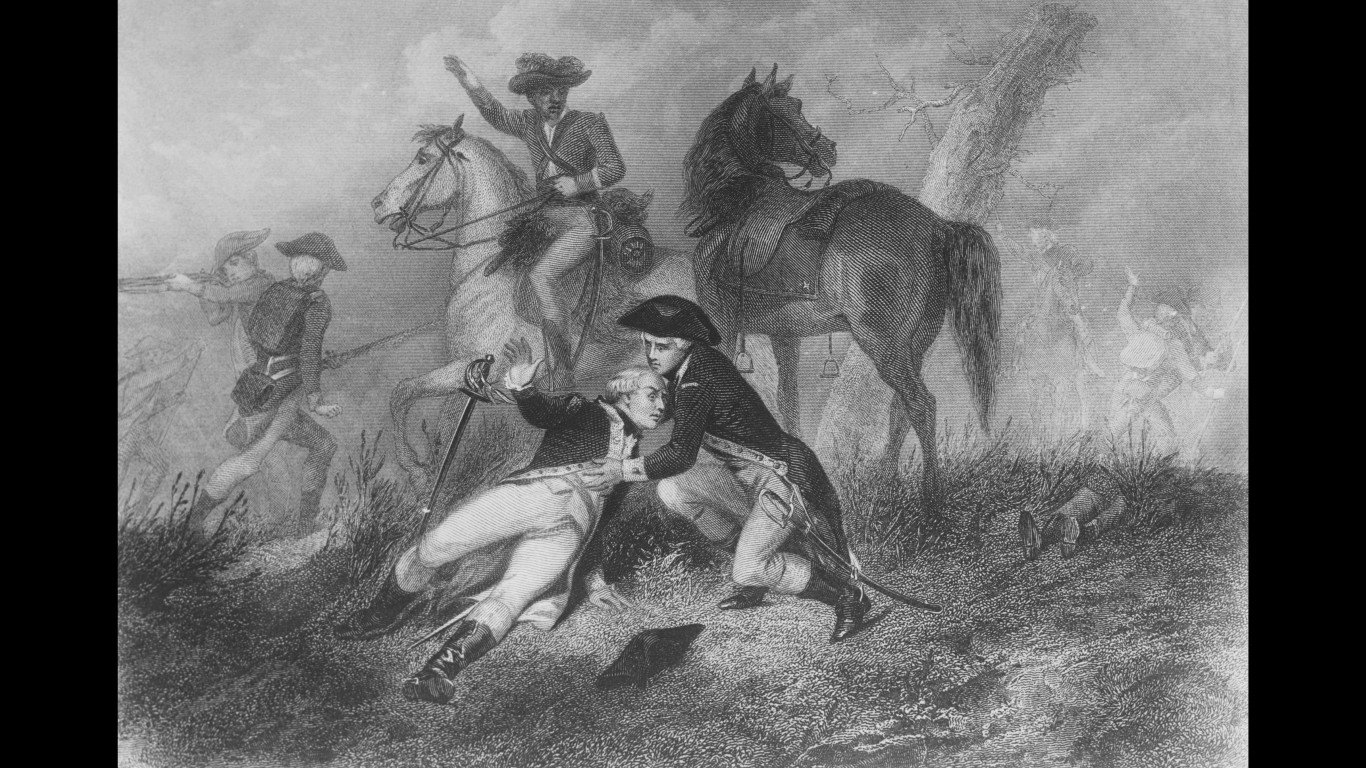
- Date(s): Sept. 11, 1777
- Conflict: Revolutionary War
Washington was determined to prevent the British from capturing Philadelphia, then the capital of the new American nation. This was the largest battle of the Revolutionary War, involving a total of 30,000 troops, and the British under General William Howe defeated the upstart American army, successfully occupying Philadelphia despite Washington’s efforts.
The Battle of Bladensburg
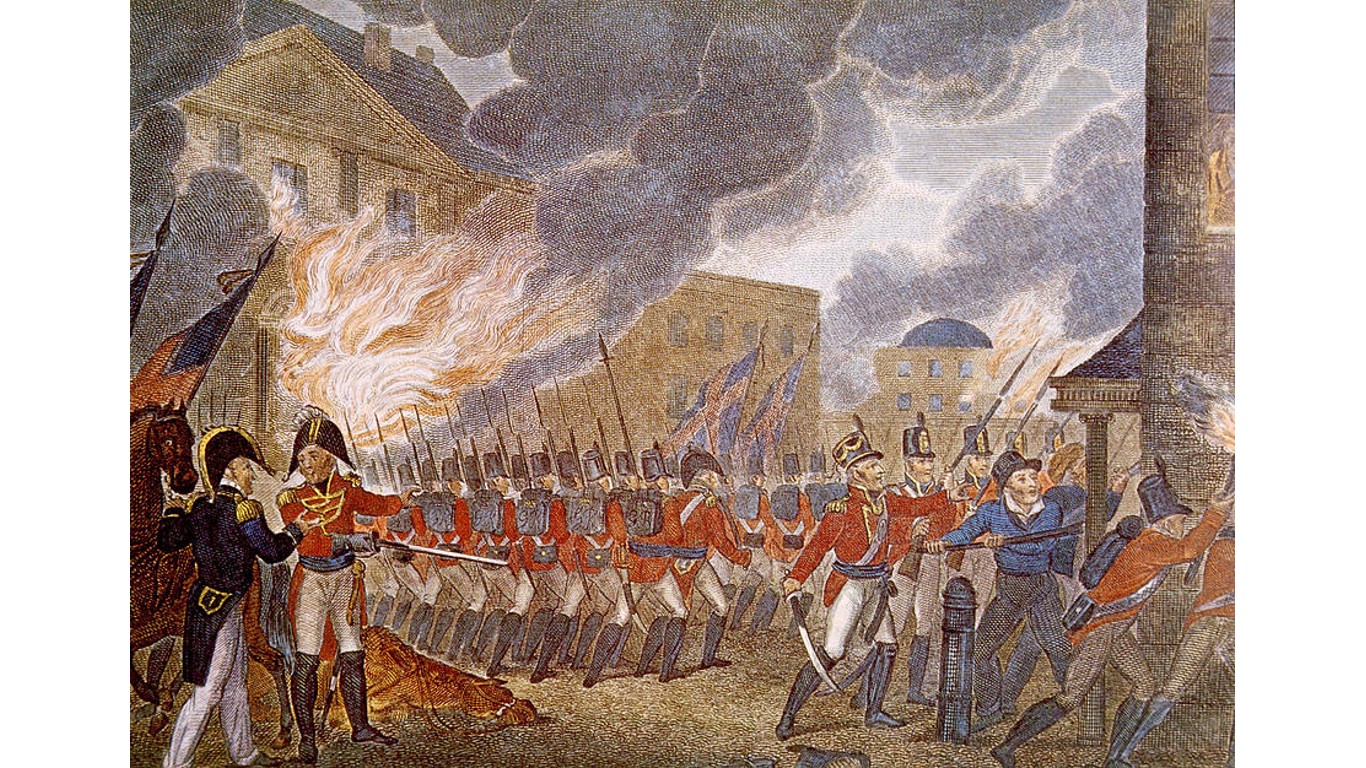
- Date(s): Aug. 24, 1814
- Conflict: The War of 1812
The British attacked the American militia at Bladensburg, Maryland, just northeast of Washington D.C., which had by then become the U.S. capital. The militia quickly gave way. A retreat was ordered, and the troops were seen running through the streets of Washington, joined by fleeing members of the government. The British took the city and burned the White House and other buildings, humiliating the Americans.
The First Battle of Bull Run
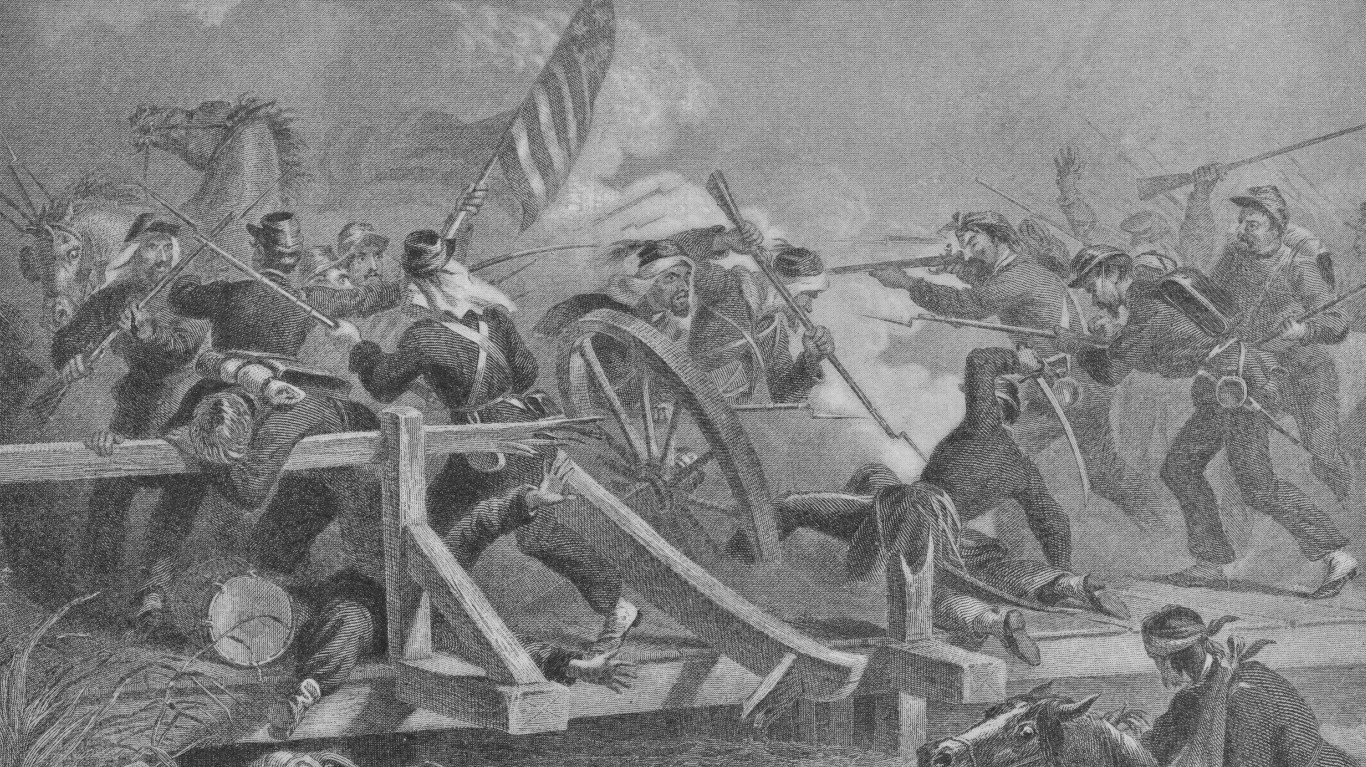
- Date(s): July 21, 1861
- Conflict: Civil War
The first major battle of the Civil War was a major win for the Confederates. Their victory, in the early days of the war, undermined the idea that the Union military superiority would end the conflict quickly.
The Battle of Shiloh
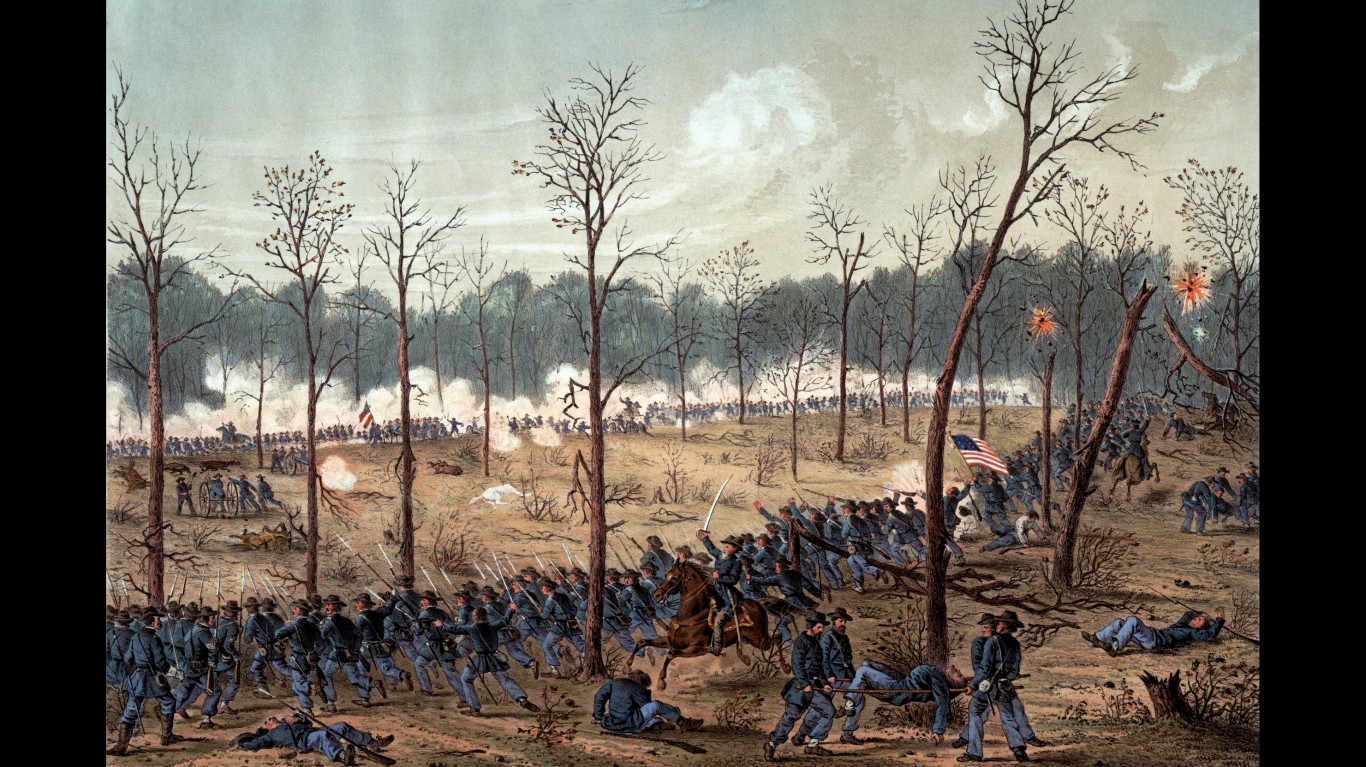
- Date(s): April 7, 1862
- Conflict: Civil War
One of the few major mistakes made by Ulysses Grant during the Civil War was his overconfidence before the Battle of Shiloh. Grant did not put up proper defenses and Confederate soldiers overran the Union camps. Grant eventually turned the tide of the battle, but casualties were horrible, with the Union side losing as many as 23,000 men.
The Battle of Gettysburg
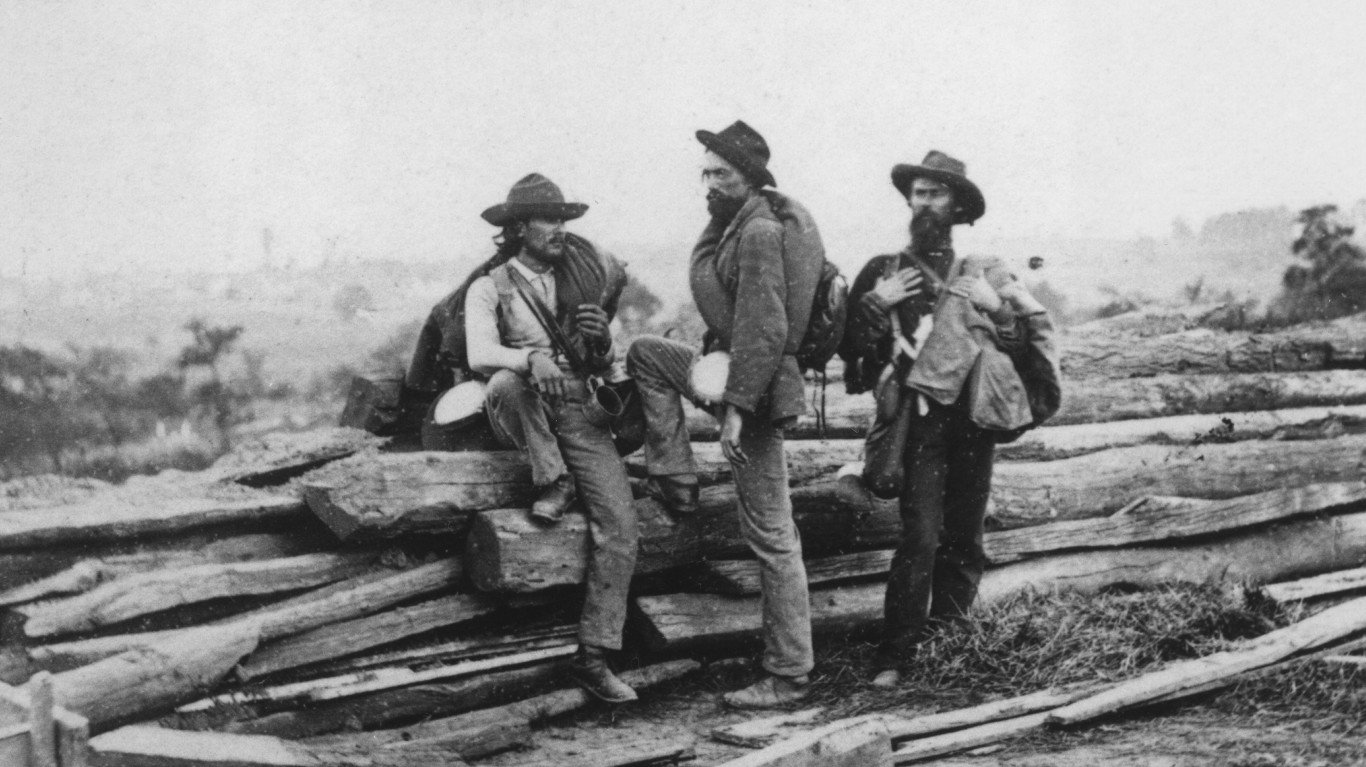
- Date(s): July 1-3, 1863
- Conflict: Civil War
Fought as Robert E. Lee invaded Pennsylvania, the Battle of Gettysburg took a heavy toll on both sides, especially after Lee made the huge mistake of charging Union lines across a field nearly one mile across on July 3. Known as “Pickett’s Charge,” this sortie ended the battle, with almost 7,000 men on both sides either killed or wounded. While the battle was a major defeat for the Confederates, costing them more than a third of their army, Union casualties were heavy, too, numbering about 23,000 over the three days the battle raged.
The Battle of Chickamauga
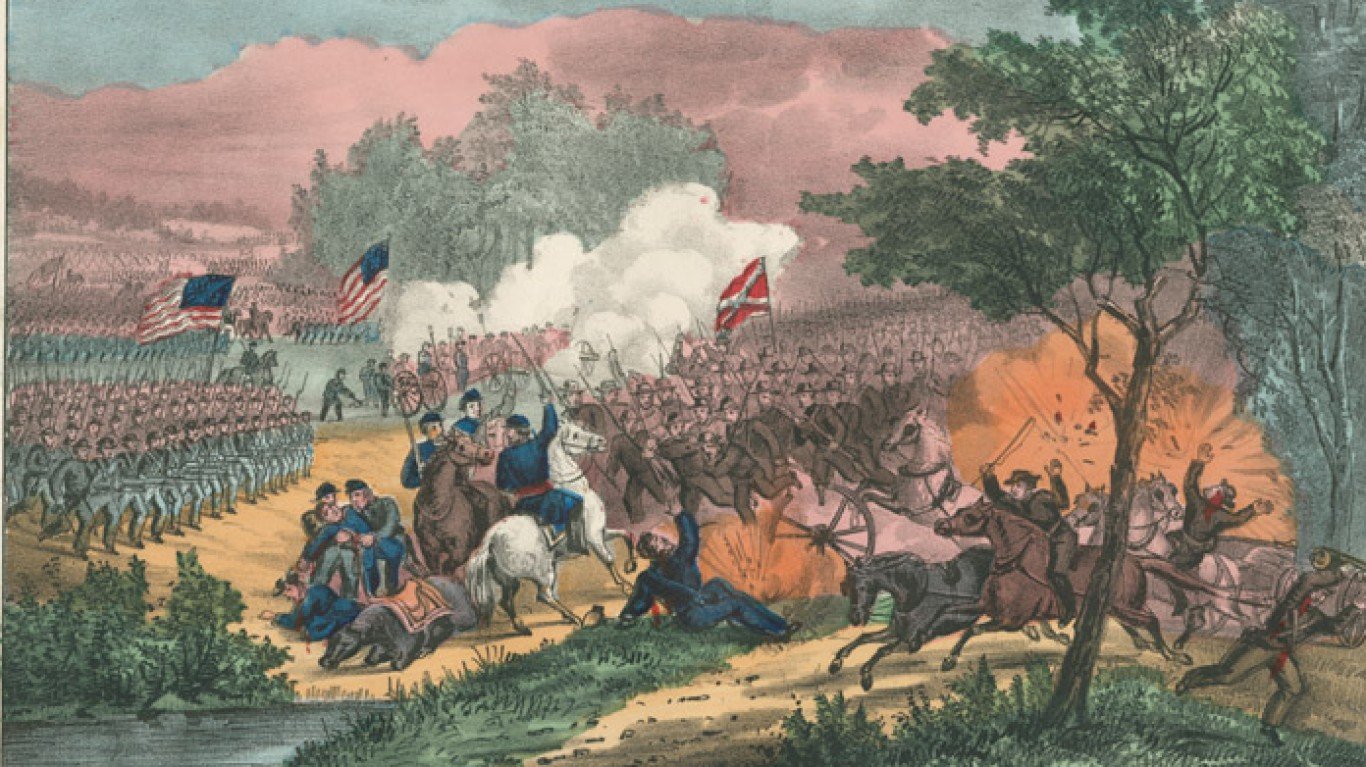
- Date(s): Sept. 18-20, 1863
- Conflict: Civil War
After several major losses, the Confederate Army of Tennessee broke through Union lines and forced its soldiers to retreat to Chattanooga. However, the battle may have been a bad miscalculation, as the Confederates suffered more than 18,000 casualties, a number they could ill afford.
The Battle of the Little Bighorn
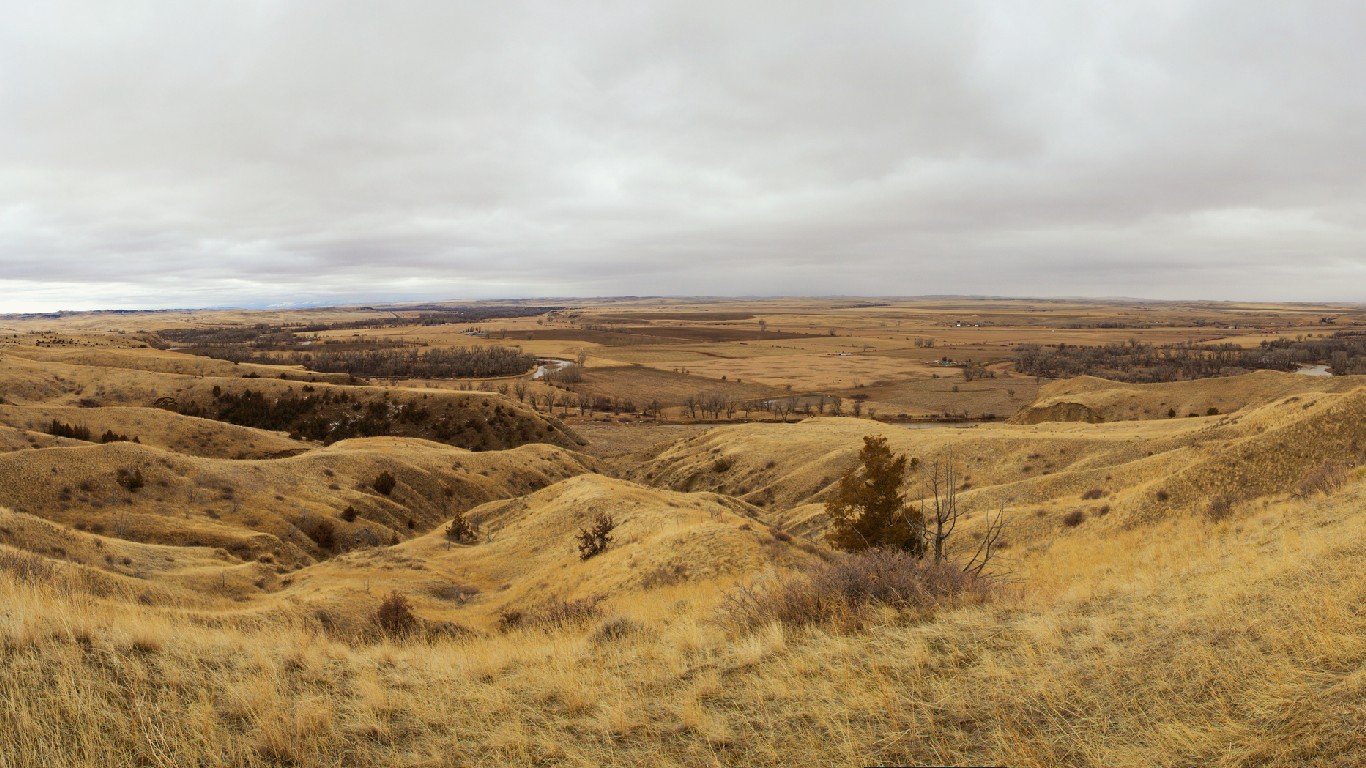
- Date(s): June 25-26, 1876
- Conflict: Great Sioux War of 1876
By 1876, American troops had pushed Native Americans off a great majority of their land. Civil War hero George Armstrong Custer, with about 200 men, was scouting for enemy positions. Rather than wait for reinforcements as he moved into hostile areas, he moved ahead on his own. The American military had underestimated the battle prowess of the tribes, however, and he and his entire command were slaughtered.
The Attack on Pearl Harbor
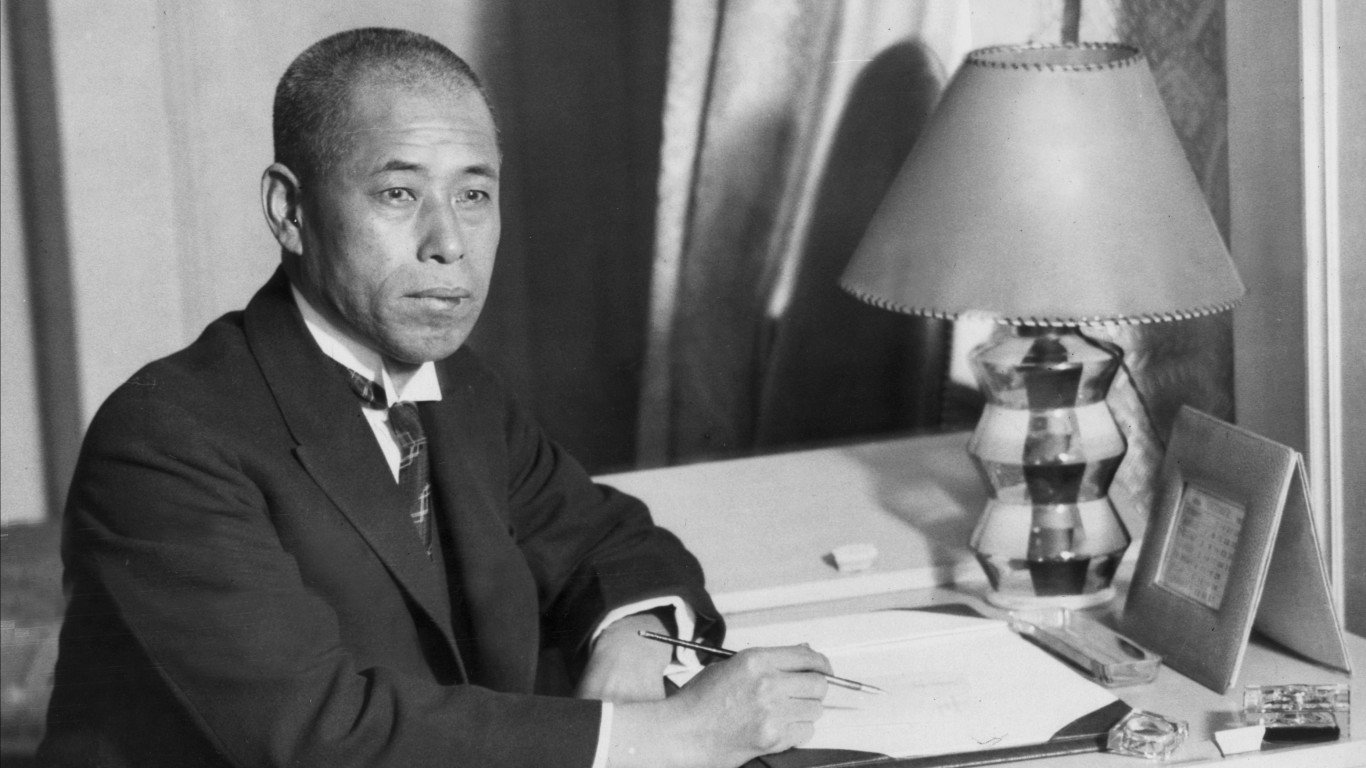
- Date(s): Dec. 7, 1941
- Conflict: World War II
There may be no better example in history of a major military force that was caught completely by surprise and then virtually destroyed. The American military disregarded all signs that war with Japan was impending and lost virtually its entire Pacific fleet.
The Battle of the Philippines
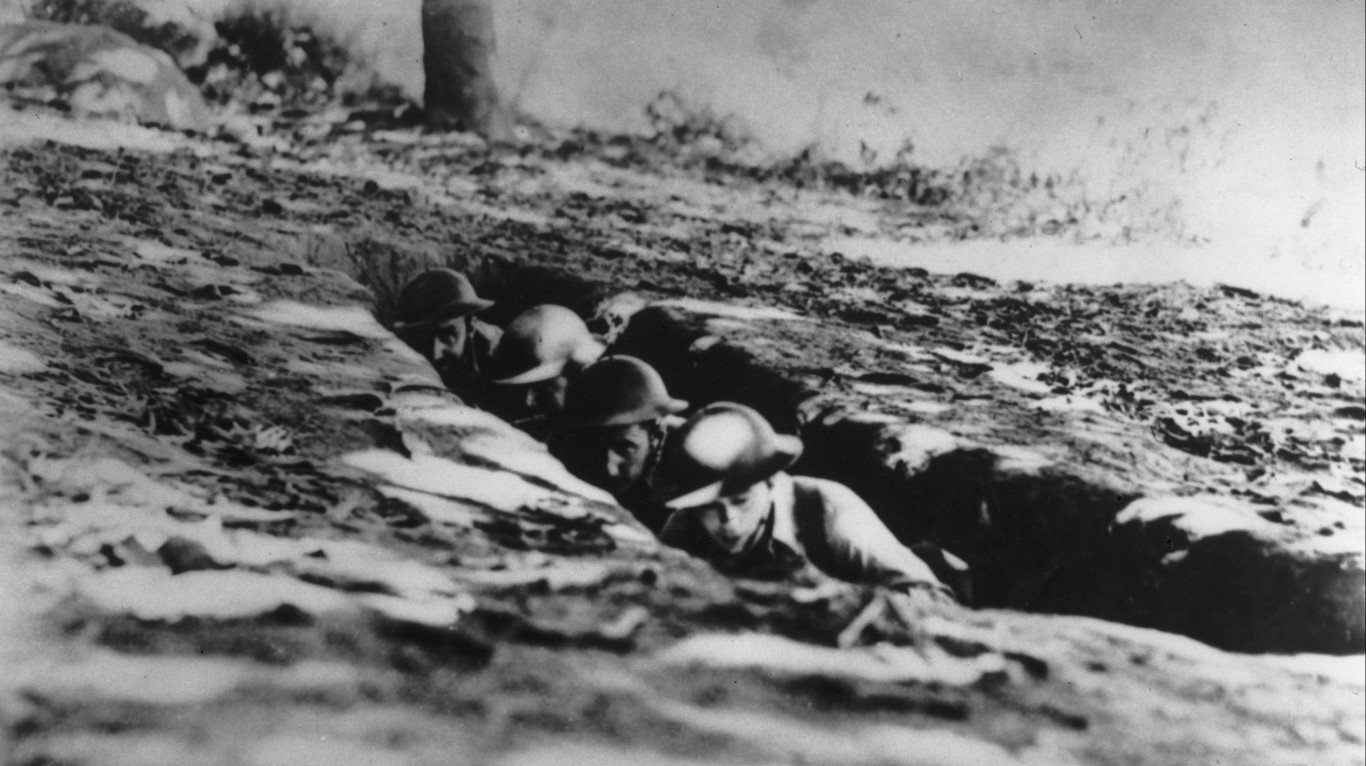
- Date(s): Dec. 8, 1941-May 8, 1942
- Conflict: World War II
The day after Pearl Harbor, the Japanese launched an invasion of the Philippines, then a U.S. overseas territory. American forces outnumbered the invaders, but they were mostly inexperienced recruits who had never been battle-tested and they were quickly overrun. The war between the two sides raged on for months, and by the time it ended, some 23,000 Americans and about 100,000 of their Filipino allies had been killed, wounded, or captured. Captured soldiers were forced into slave labor by the Japanese and many more died. The battle was once described as the worst military defeat in U.S. history.
The Battle of Kasserine Pass
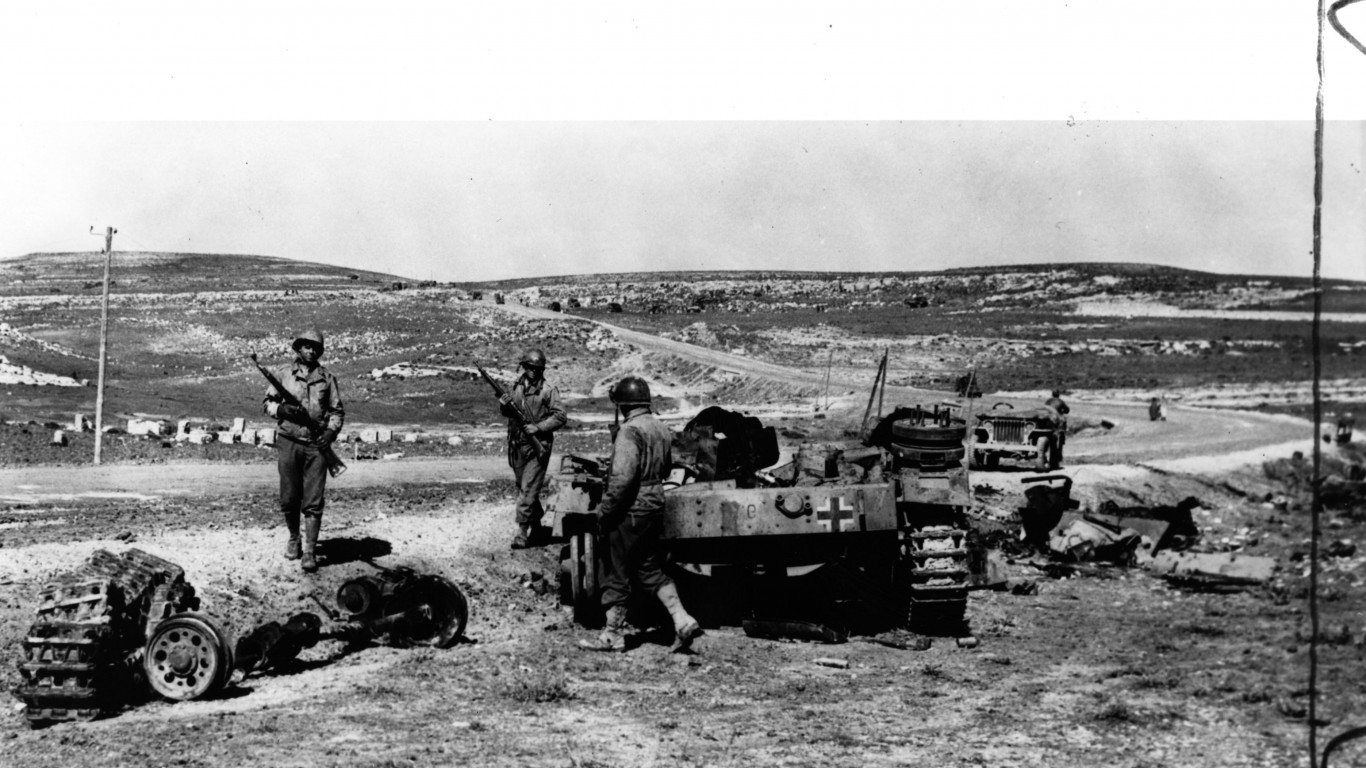
- Date(s): Feb. 19-24, 1943
- Conflict: World War II
Due to poor preparations by America’s senior command in North Africa, German general Erwin Rommel made a surprise attack. American and other Allied forces had to retreat 50 miles to regroup. A huge quantity of American materiel – tanks, half-tracks, artillery, etc. – was destroyed or taken by the Germans and so many U.S. soldiers were killed, wounded, or missing that some 7,000 replacements were needed to bring forces up to strength.
The Battle of the Bulge
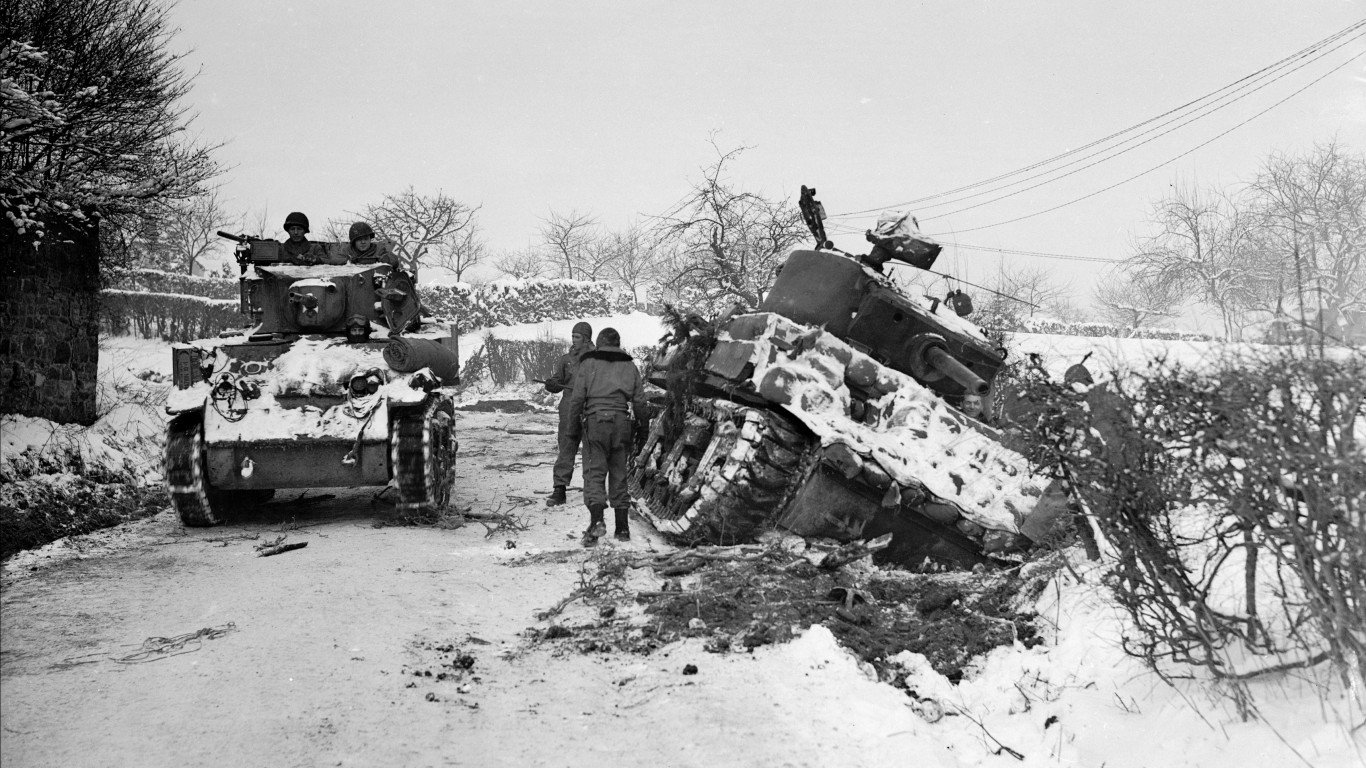
- Date(s): Dec. 16, 1944-Jan. 16, 1945
- Conflict: World War II
Late in the war, with America and its allies assuming that hostilities were essentially over since Germany had almost no capacity to defend itself from invasion, German tanks led a surprise attack, resulting in almost 90,000 American casualties, including 19.000 deaths, making this the deadliest single battle fought by the U.S. during World War II.
The Battle of Chosin Reservoir
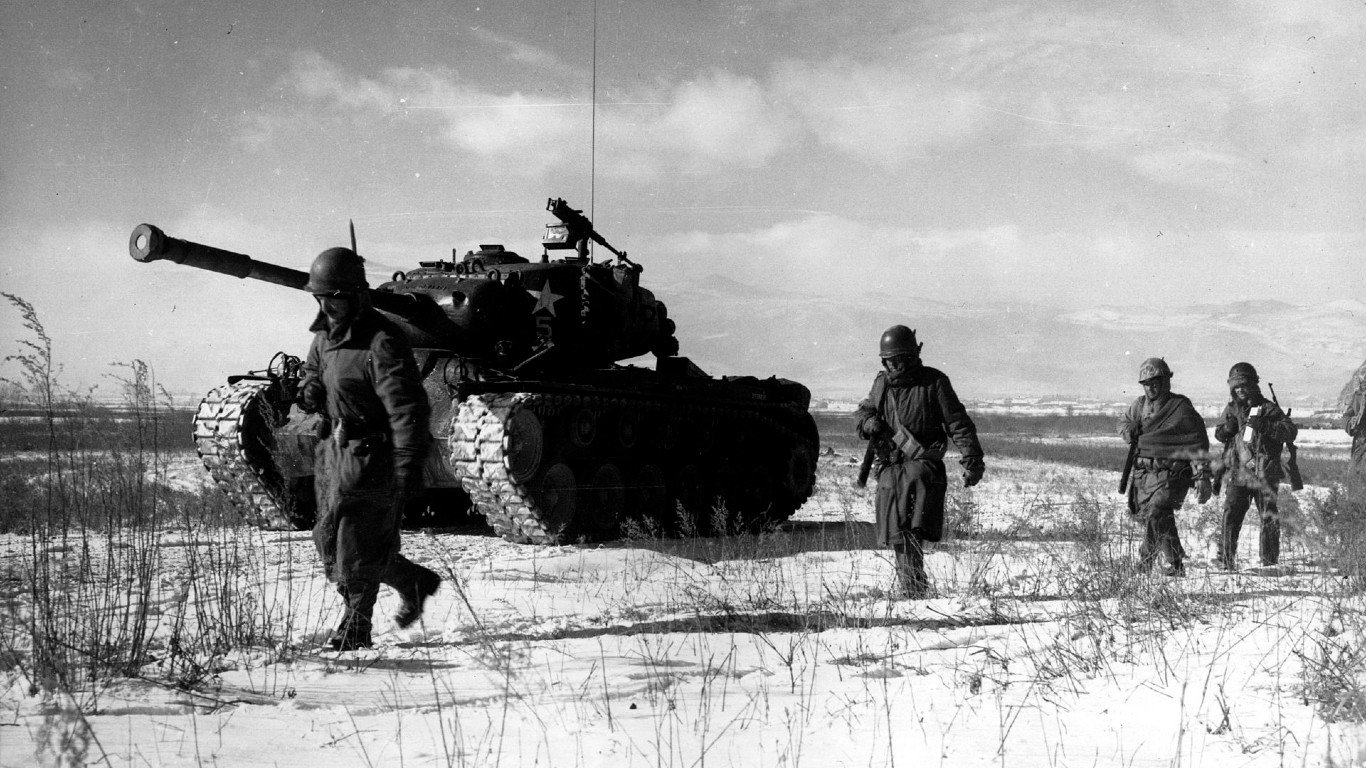
- Date(s): Nov. 27-Dec. 13, 1950
- Conflict: Korean War
As U.S. and allied forces pressed deep into what is now North Korea as a means to end the Korean conflict, they moved close to China. The Chinese retaliated with a force that numbered well over 100,000 soldiers. The U.S. was forced into a brutal retreat that cost nearly 15,000 casualties. One American army unit, the so-called Task Force MacLean, was almost completely wiped out. The battle also helped tip the scales of the war in the direction of North Korea and China.
